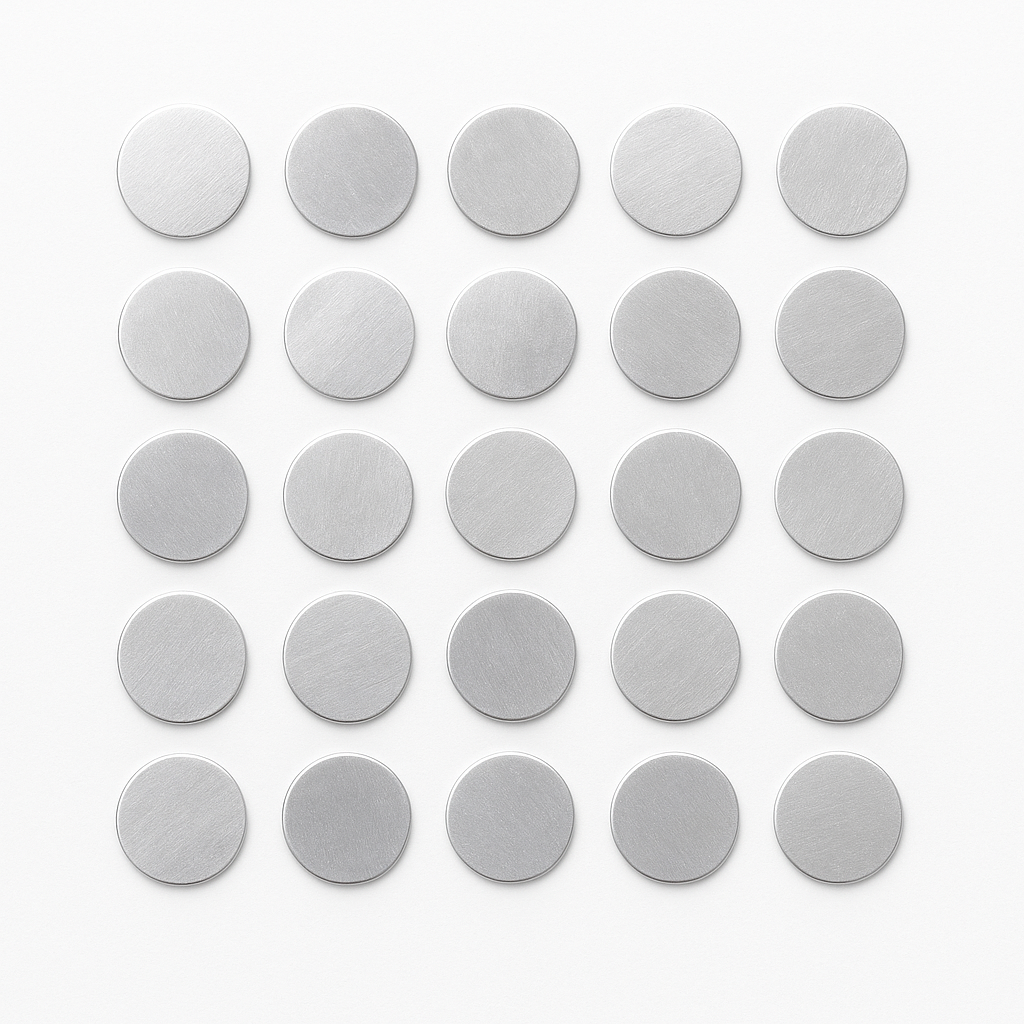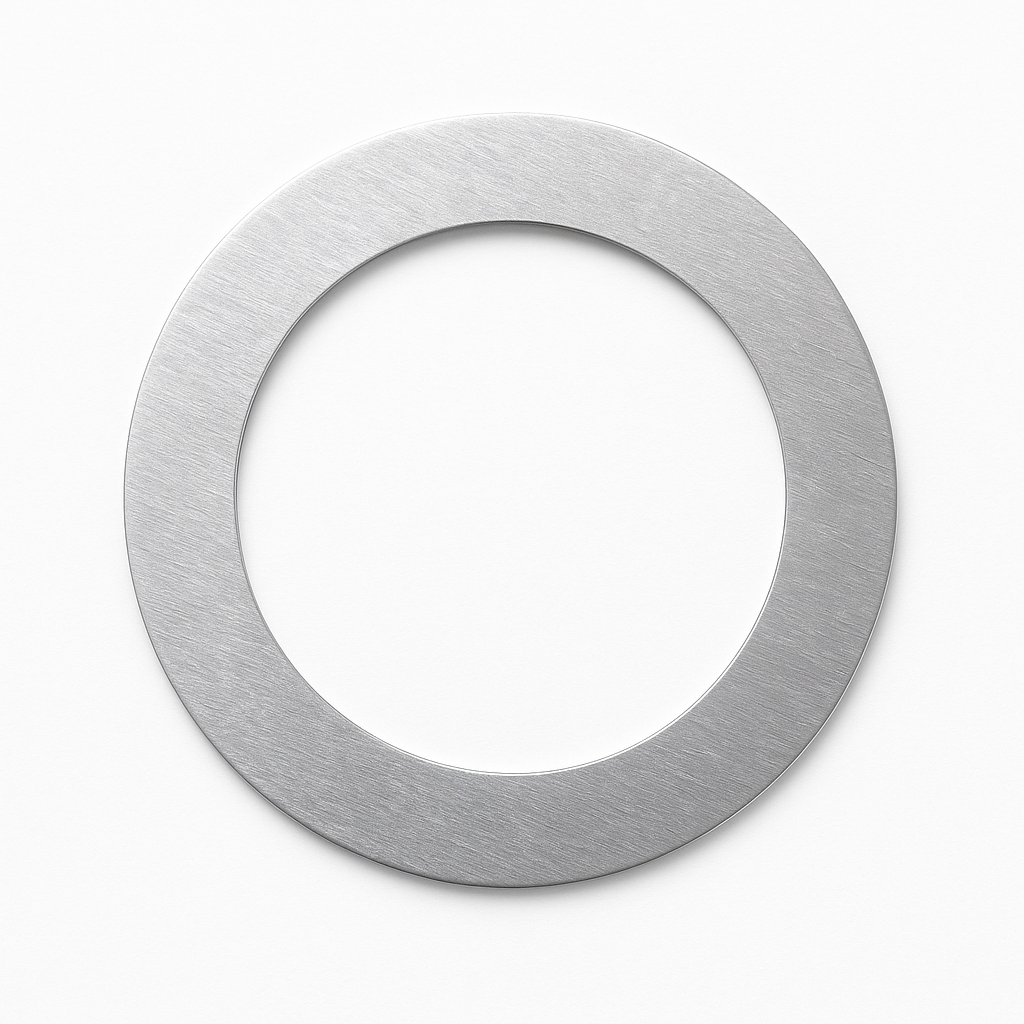-
1-200 Industry Creation Town, Changsha
Indium Foil
Indium foil, a malleable and highly conductive material, plays a crucial role in various industrial and scientific applications. This article delves into the properties, manufacturing processes, applications, and handling considerations of indium foil, providing a comprehensive overview for researchers, engineers, and anyone interested in this versatile metal.
What is Indium Foil?
Indium foil is a thin sheet of indium metal. Indium (symbol In) is a soft, silvery-white metal with a bright luster. It is a relatively rare element, often found as a trace constituent in zinc ores. Indium is characterized by its extreme malleability, ductility, and low melting point (156.6 °C). These properties make it exceptionally well-suited for applications where conformability, thermal conductivity, and electrical conductivity are essential.
Indium foil is typically available in various thicknesses, ranging from a few micrometers to several millimeters. The specific thickness is chosen depending on the application. It is often supplied in rolls or sheets and can be easily cut or shaped to meet specific requirements.
Properties of Indium Foil
The unique properties of indium foil are what drive its wide range of applications. These properties include:
- Extreme Malleability and Ductility: Indium is one of the softest metals, allowing it to be easily deformed without fracturing. This property makes it ideal for applications requiring tight seals and conforming surfaces.
- Low Melting Point: Indium’s low melting point allows it to be used as a solder and as a component in low-temperature alloys.
- High Thermal Conductivity: Indium exhibits good thermal conductivity, enabling it to efficiently transfer heat. This makes it useful in thermal interface materials.
- Excellent Electrical Conductivity: Indium is a good conductor of electricity, making it suitable for electrical contacts and conductive coatings.
- Corrosion Resistance: Indium is relatively resistant to corrosion in many environments, contributing to its longevity and reliability.
- Wettability: Indium readily wets other metals and glass, facilitating strong bonding and sealing.
- Cryogenic Properties: Indium retains its ductility and softness at cryogenic temperatures, making it useful in specialized applications.
Manufacturing of Indium Foil
Indium foil is typically manufactured through a process of rolling. The process involves the following steps:
- Indium Ingot Preparation: High-purity indium ingots are the starting material. The purity of the indium is critical for many applications, especially in semiconductor industries.
- Heating: The indium ingot is heated to increase its malleability and facilitate the rolling process. The heating temperature is carefully controlled to prevent oxidation or other undesirable reactions.
- Rolling: The heated indium ingot is passed through a series of rollers, gradually reducing its thickness. The rolling process is carefully controlled to ensure uniform thickness and surface finish. Multiple passes through the rollers are required to achieve the desired final thickness.
- Annealing (Optional): An annealing process may be performed to relieve internal stresses introduced during the rolling process. This can improve the foil’s ductility and prevent cracking or warping.
- Cleaning: The indium foil is cleaned to remove any surface contaminants, such as oils or oxides. This is important for ensuring good adhesion and electrical contact in subsequent applications.
- Slitting and Cutting: The foil is slit and cut to the desired width and length. Precise cutting is crucial for applications requiring specific dimensions.
- Packaging: The finished indium foil is carefully packaged to prevent damage or contamination during storage and transportation. Typically, it’s wrapped in protective materials like acid-free paper or polyethylene film and stored in a dry, inert environment.
Applications of Indium Foil
Indium foil’s unique properties make it valuable in a wide array of applications, including:
- Thermal Interface Materials (TIMs): Indium foil is used as a TIM between heat-generating components (e.g., microprocessors) and heat sinks. Its high thermal conductivity and conformability ensure efficient heat transfer, preventing overheating and improving performance. This is especially vital in high-performance computing and electronics.
- Seals and Gaskets: Due to its malleability, indium foil is used to create hermetic seals and gaskets in vacuum systems, cryogenic equipment, and other applications where leak-tightness is critical. It can conform to irregular surfaces, ensuring a reliable seal even under demanding conditions.
- Solder and Brazing: Indium is a component of various solder alloys used for joining electronic components, creating conductive coatings, and sealing. Indium-containing solders often exhibit lower melting points and improved wetting characteristics.
- Electrical Contacts: Indium foil can be used to improve electrical contact between surfaces. Its conformability helps to fill microscopic gaps and reduce contact resistance, enhancing the reliability of electrical connections. It’s often used in high-frequency applications.
- Cryogenic Applications: Indium’s retention of ductility at cryogenic temperatures makes it suitable for sealing and bonding in cryogenic research and engineering.
- Nuclear Reactors: Indium foil is used as a neutron absorber in nuclear reactors due to its high neutron capture cross-section.
- Thin Film Deposition: Indium can be evaporated or sputtered to create thin films for various applications, including transparent conductive oxides (TCOs) used in displays and solar cells.
- Strain Gauges: Indium foil can be used in the fabrication of specialized strain gauges for high-temperature applications.
- Research and Development: Indium foil is widely used in research laboratories for various experiments and prototyping due to its versatility and unique properties.
Handling and Storage of Indium Foil
Proper handling and storage are crucial to maintain the quality and integrity of indium foil.
- Cleanliness: Handle indium foil with clean gloves to prevent contamination with oils, dirt, or other substances.
- Storage: Store indium foil in a dry, inert atmosphere (e.g., under argon or nitrogen) to prevent oxidation. Keep it away from corrosive chemicals and extreme temperatures.
- Packaging: Store the foil in its original packaging or in a suitable container that protects it from physical damage and environmental exposure. Acid-free paper or polyethylene film is often used.
- Cutting and Shaping: Use sharp, clean tools for cutting or shaping indium foil to avoid tearing or creating burrs.
- Cleaning (Before Use): If the indium foil has been exposed to the environment, clean it with a suitable solvent (e.g., acetone or isopropanol) before use to remove any surface contaminants. Handle the solvent with appropriate safety precautions.
Conclusion
Indium foil is a versatile material with a unique combination of properties that make it indispensable in numerous applications. Its exceptional malleability, low melting point, high thermal and electrical conductivity, and corrosion resistance have made it a key component in electronics, sealing, thermal management, and various specialized industries. Understanding its properties, manufacturing process, applications, and handling considerations is essential for maximizing its performance and ensuring its reliable use. As technology continues to advance, indium foil is likely to remain a critical material in a wide range of innovative applications.
Frequently Asked Questions (FAQs)
What is the typical thickness range for indium foil?
Indium foil is available in thicknesses ranging from a few micrometers (µm) to several millimeters (mm), depending on the specific application.
Is indium foil toxic?
Indium compounds have some toxicity, and exposure should be minimized. Always handle indium foil with gloves and avoid inhalation of dust or fumes. Consult a safety data sheet (SDS) for specific safety information.
Can indium foil be recycled?
Yes, indium can be recycled, although the process may be complex and require specialized facilities. Recycling is encouraged to conserve resources and minimize environmental impact.
How does indium foil compare to other thermal interface materials?
Indium foil offers excellent thermal conductivity and conformability compared to many other TIMs, such as thermal grease or elastomers. However, it can be more expensive and may require more careful handling.
What are the common impurities found in indium foil?
Common impurities include lead, tin, cadmium, and zinc. The purity level of indium foil is typically specified by the manufacturer, and high-purity grades are available for sensitive applications.
Can indium foil be used in high-vacuum applications?
Yes, indium foil is commonly used in high-vacuum applications due to its low vapor pressure and ability to form hermetic seals.
How can I clean indium foil before use?
Indium foil can be cleaned with a suitable solvent, such as acetone or isopropanol. Ensure the solvent is residue-free and handle it with appropriate safety precautions. A light etching with a mild acid may also be used in some cases, followed by thorough rinsing.




